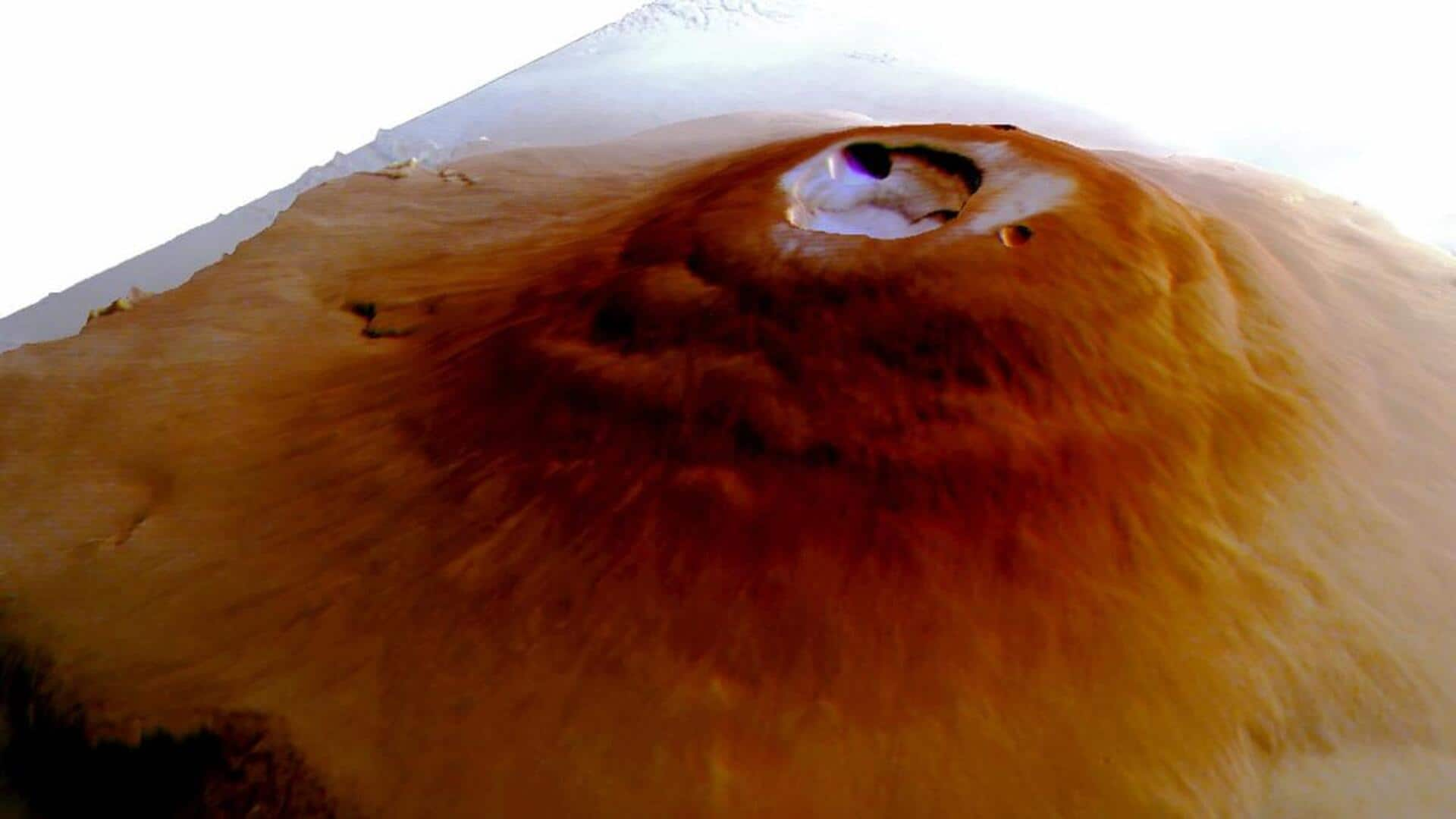
Frost detected near Mars's equator for the first time
What's the story
A team of international planetary scientists has discovered patches of water frost on the Tharsis volcanoes of Mars. This is the first time that frost has been observed near the planet's equator. The Tharsis volcanoes are not only the tallest on Mars but also in the entire solar system. The discovery was made using high-resolution images from the Colour and Stereo Surface Imaging System (CaSSIS) on the European Space Agency's (ESA) Trace Gas Orbiter.
New perspective
Frost's presence challenges existing climate dynamics
The discovery of frost on Mars's Tharsis volcanoes challenges current understanding of the planet's climate dynamics. Adomas Valantinas, a postdoctoral fellow at Brown University, who led the study, said, "We thought it was improbable for frost to form around Mars's equator, as the mix of sunshine and thin atmosphere keeps temperatures during the day relatively high at both the surface and mountaintop." The findings were published in Nature Geoscience.
Frost dynamics
Frost is a temporary feature on Mars
The study reveals that frost on Mars is a temporary feature, present only for a few hours after sunrise before evaporating in the high temperatures. Despite its brief appearance, it is estimated that around 150,000 tons of water cycle between the surface and atmosphere on a daily basis. This suggests that even a thin layer of frost, about the width of a human hair, can have significant implications for Mars's water cycle.
Frost location
Frost found in calderas of Tharsis volcanoes
The team found that the frost deposits in the calderas of the Tharsis volcanoes. These hollows are the openings at the summit of the volcano where eruptions have previously exploded out through the crust. The researchers suggest that unique microclimates at the tops of the volcanoes allow these thin layers of frost to form. This finding could have significant implications for understanding Mars's water distribution and movement.